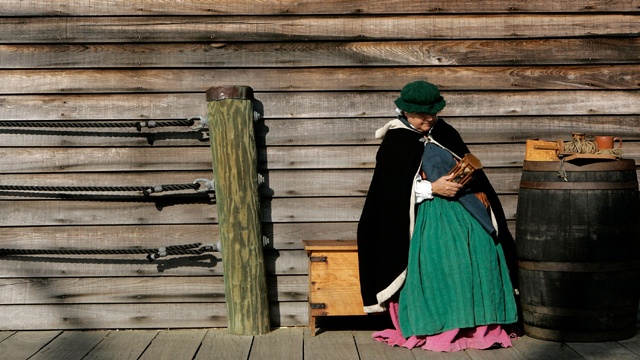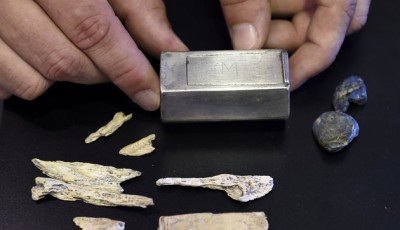Tomb of the Now Known: Jamestown Settlers Identified After 400 Years
Scientists used technology to identify the remains of four early residents of Jamestown, Va., the first permanent English settlement in what would become the United States.
The structure is potentially the first Protestant church built in the new world, and the men’s burial there signals their high status in the colony, the researchers said. (An interesting aside-it was the same church in which Pocahontas married John Rolfe.) Using the specific time frame in which the church existed, the team searched through historical records from the Virginia Company (sponsor of the Jamestown adventure) and colonists’ recorded accounts to compile a list of possible identities for the deceased leaders.
The group included a minister, two military captains and the first English knight buried in North America, a research team announced on 28 July at the Smithsonian Institute’s National Museum of Natural History in Washington DC. The museum helped study the burial sites.
The men are the highest-ranking leaders of the colonies to have been unearthed, though researchers acknowledge the four are little known outside of scholarly circles.
Remains of the four men – the Rev. Robert Hunt, Capt. Gabriel Archer, Sir Ferdinando Wainman, and Capt. William West – were discovered in the church’s chancel, an area near the altar typically reserved for clergy.
“This is the first colony, and it’s closely connected to what follows, so what takes place at Jamestown in these early years is not separate from the mainline of development of American society”, said James Horn, the president of Jamestown Rediscovery, the organization leading the dig there. According to the researchers, the men lived during a crucial point in the history of the settlement, when it was on the brink of failure due to starvation, disease and conflict. “It’s not John Smith”, said Douglas Owsley, a forensic anthropologist at the Smithsonian. “These men were among the first founders of English America”.
The remains of Capt. Gabriel Archer and three other Jamestown settlers were excavated in 2013. Wainman and William West were both related to the baron.
In addition to the skeletal remains, the archaeologists found the stains and nails left by three wooden coffins, including two extremely rare examples that were finely crafted into an anthropomorphic or human shape.
The excavation and follow-up research confirmed the importance of the church and the governor’s June 1610 arrival, which found a colony almost destroyed by the deadly trials of the 1609-10 Starving Time yet stayed to clean up and then rebuild the settlement in ways that helped ensure its long-term survival. Although scientists are unable to open it, 3D X-ray images of the box reveal it contains bone fragments and an ampulla, a small container used for holy liquids.
William Kelso, the director of archaeology for the Jamestown Rediscovery Foundation, said that other Catholic relics uncovered in Jamestown were thought to have been brought to the colony as trading goods. The discovery is timely, as some scientists think Jamestown (on the Virginia coast) could be overtaken by rising sea levels by the end of this century.
Experts said that the historical site is threatened by changes to the soil and nearby water levels.
“These were individuals that were so critical to the foundation of America as we know it today, yet we don’t know their names”, he said.











